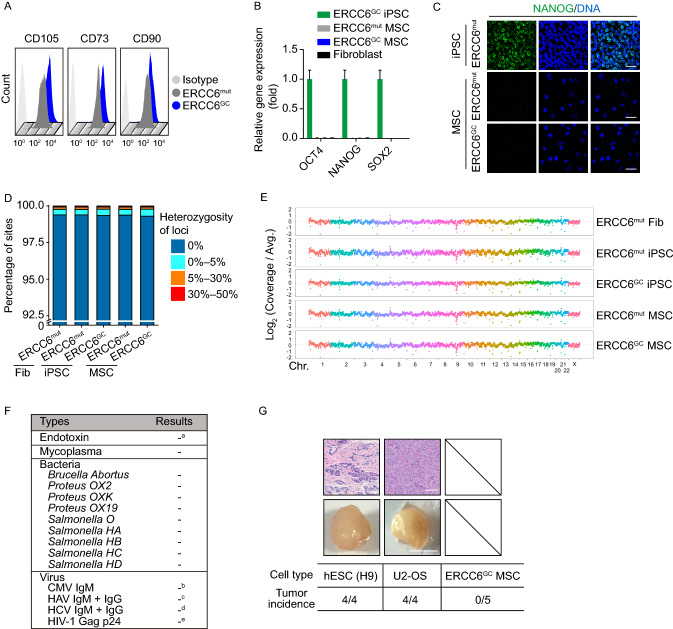Si Wang
Si Wang
1Department of Obstetrics and Gynecology, Center for Reproductive Medicine, Peking University Third Hospital, Beijing, 100191 China
2National Laboratory of Biomacromolecules, CAS Center for Excellence in Biomacromolecules, Institute of Biophysics, Chinese Academy of Sciences, Beijing, 100101 China
5Advanced Innovation Center for Human Brain Protection, National Clinical Research Center for Geriatric Disorders, Xuanwu Hospital Capital Medical University, Beijing, 100053 China
1,2,5,
Zheying Min
Zheying Min
1Department of Obstetrics and Gynecology, Center for Reproductive Medicine, Peking University Third Hospital, Beijing, 100191 China
13Peking-Tsinghua Center for Life Sciences, Academy for Advanced Interdisciplinary Studies, Peking University, Beijing, 100871 China
1,13,
Qianzhao Ji
Qianzhao Ji
2National Laboratory of Biomacromolecules, CAS Center for Excellence in Biomacromolecules, Institute of Biophysics, Chinese Academy of Sciences, Beijing, 100101 China
4University of Chinese Academy of Sciences, Beijing, 100049 China
2,4,
Lingling Geng
Lingling Geng
5Advanced Innovation Center for Human Brain Protection, National Clinical Research Center for Geriatric Disorders, Xuanwu Hospital Capital Medical University, Beijing, 100053 China
5,
Yao Su
Yao Su
5Advanced Innovation Center for Human Brain Protection, National Clinical Research Center for Geriatric Disorders, Xuanwu Hospital Capital Medical University, Beijing, 100053 China
5,
Zunpeng Liu
Zunpeng Liu
3State Key Laboratory of Stem Cell and Reproductive Biology, Institute of Zoology, Chinese Academy of Sciences, Beijing, 100101 China
4University of Chinese Academy of Sciences, Beijing, 100049 China
3,4,
Huifang Hu
Huifang Hu
3State Key Laboratory of Stem Cell and Reproductive Biology, Institute of Zoology, Chinese Academy of Sciences, Beijing, 100101 China
4University of Chinese Academy of Sciences, Beijing, 100049 China
3,4,
Lixia Wang
Lixia Wang
2National Laboratory of Biomacromolecules, CAS Center for Excellence in Biomacromolecules, Institute of Biophysics, Chinese Academy of Sciences, Beijing, 100101 China
4University of Chinese Academy of Sciences, Beijing, 100049 China
2,4,
Weiqi Zhang
Weiqi Zhang
2National Laboratory of Biomacromolecules, CAS Center for Excellence in Biomacromolecules, Institute of Biophysics, Chinese Academy of Sciences, Beijing, 100101 China
4University of Chinese Academy of Sciences, Beijing, 100049 China
5Advanced Innovation Center for Human Brain Protection, National Clinical Research Center for Geriatric Disorders, Xuanwu Hospital Capital Medical University, Beijing, 100053 China
6Institute for Stem cell and Regeneration, Chinese Academy of Sciences, Beijing, 100101 China
7Key Laboratory of Genomic and Precision Medicine, Beijing Institute of Genomics, Chinese Academy of Sciences, Beijing, 100101 China
2,4,5,6,7,
Keiichiro Suzuiki
Keiichiro Suzuiki
9Institute for Advanced Co-Creation Studies, Osaka University, Osaka, 560-8531 Japan
10Graduate School of Engineering Science, Osaka University, Osaka, 560-8531 Japan
9,10,
Yu Huang
Yu Huang
11Department of Medical Genetics, School of Basic Medical Sciences, Peking University Health Science Center, Beijing, 100191 China
11,
Puyao Zhang
Puyao Zhang
1Department of Obstetrics and Gynecology, Center for Reproductive Medicine, Peking University Third Hospital, Beijing, 100191 China
1,
Tie-Shan Tang
Tie-Shan Tang
4University of Chinese Academy of Sciences, Beijing, 100049 China
6Institute for Stem cell and Regeneration, Chinese Academy of Sciences, Beijing, 100101 China
12State Key Laboratory of Membrane Biology, Institute of Zoology, Chinese Academy of Sciences, Beijing, 100101 China
4,6,12,
Jing Qu
Jing Qu
3State Key Laboratory of Stem Cell and Reproductive Biology, Institute of Zoology, Chinese Academy of Sciences, Beijing, 100101 China
4University of Chinese Academy of Sciences, Beijing, 100049 China
6Institute for Stem cell and Regeneration, Chinese Academy of Sciences, Beijing, 100101 China
3,4,6,✉,
Yang Yu
Yang Yu
1Department of Obstetrics and Gynecology, Center for Reproductive Medicine, Peking University Third Hospital, Beijing, 100191 China
1,✉,
Guang-Hui Liu
Guang-Hui Liu
2National Laboratory of Biomacromolecules, CAS Center for Excellence in Biomacromolecules, Institute of Biophysics, Chinese Academy of Sciences, Beijing, 100101 China
4University of Chinese Academy of Sciences, Beijing, 100049 China
5Advanced Innovation Center for Human Brain Protection, National Clinical Research Center for Geriatric Disorders, Xuanwu Hospital Capital Medical University, Beijing, 100053 China
6Institute for Stem cell and Regeneration, Chinese Academy of Sciences, Beijing, 100101 China
8Beijing Institute for Brain Disorders, Beijing, 100069 China
2,4,5,6,8,✉,
Jie Qiao
Jie Qiao
1Department of Obstetrics and Gynecology, Center for Reproductive Medicine, Peking University Third Hospital, Beijing, 100191 China
13Peking-Tsinghua Center for Life Sciences, Academy for Advanced Interdisciplinary Studies, Peking University, Beijing, 100871 China
1,13,✉
1Department of Obstetrics and Gynecology, Center for Reproductive Medicine, Peking University Third Hospital, Beijing, 100191 China
2National Laboratory of Biomacromolecules, CAS Center for Excellence in Biomacromolecules, Institute of Biophysics, Chinese Academy of Sciences, Beijing, 100101 China
3State Key Laboratory of Stem Cell and Reproductive Biology, Institute of Zoology, Chinese Academy of Sciences, Beijing, 100101 China
4University of Chinese Academy of Sciences, Beijing, 100049 China
5Advanced Innovation Center for Human Brain Protection, National Clinical Research Center for Geriatric Disorders, Xuanwu Hospital Capital Medical University, Beijing, 100053 China
6Institute for Stem cell and Regeneration, Chinese Academy of Sciences, Beijing, 100101 China
7Key Laboratory of Genomic and Precision Medicine, Beijing Institute of Genomics, Chinese Academy of Sciences, Beijing, 100101 China
8Beijing Institute for Brain Disorders, Beijing, 100069 China
9Institute for Advanced Co-Creation Studies, Osaka University, Osaka, 560-8531 Japan
10Graduate School of Engineering Science, Osaka University, Osaka, 560-8531 Japan
11Department of Medical Genetics, School of Basic Medical Sciences, Peking University Health Science Center, Beijing, 100191 China
12State Key Laboratory of Membrane Biology, Institute of Zoology, Chinese Academy of Sciences, Beijing, 100101 China
13Peking-Tsinghua Center for Life Sciences, Academy for Advanced Interdisciplinary Studies, Peking University, Beijing, 100871 China
© The Author(s) 2022
Open AccessThis article is licensed under a Creative Commons Attribution 4.0 International License, which permits use, sharing, adaptation, distribution and reproduction in any medium or format, as long as you give appropriate credit to the original author(s) and the source, provide a link to the Creative Commons licence, and indicate if changes were made. The images or other third party material in this article are included in the article's Creative Commons licence, unless indicated otherwise in a credit line to the material. If material is not included in the article's Creative Commons licence and your intended use is not permitted by statutory regulation or exceeds the permitted use, you will need to obtain permission directly from the copyright holder. To view a copy of this licence, visit http://creativecommons.org/licenses/by/4.0/.



